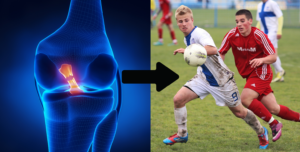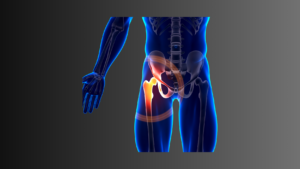
Allgemeines
Die Schwangerschaft ist eine einzigartige und bedeutende Phase im Leben einer Frau, die den Lebensstil erheblich beeinflussen kann. Ein gesunder Lebensstil, einschließlich regelmäßiger körperlicher Aktivität, hat positive Auswirkungen sowohl auf die Mutter als auch auf das ungeborene Kind. Viele Frauen sind jedoch während der Schwangerschaft weniger aktiv, oft aus Sorge um mögliche negative Auswirkungen auf das Baby. Dabei gibt es zahlreiche Vorteile von Bewegung während der Schwangerschaft, die wissenschaftlich belegt sind (Barakat et al., 2015).
Was bewirkt Training?
Regelmäßige körperliche Aktivität kann das Risiko von Schwangerschaftsdiabetes, Bluthochdruck und übermäßiger Gewichtszunahme reduzieren. Sie trägt auch zu kürzeren Wehen und einer geringeren Notwendigkeit für schmerzstillende Maßnahmen wie die Periduralanästhesie (PDA) bei. Zudem verbessert Training das allgemeine Wohlbefinden und kann depressive Symptome lindern sowie muskuloskelettale Beschwerden wie Rückenschmerzen verringern (Mottola et al., 2018; Ferrari & Joisten, 2021; Cherni et al., 2019).
Empfohlene Aktivität
Die Weltgesundheitsorganisation (WHO) empfiehlt mindestens 150 Minuten moderate körperliche Aktivität pro Woche. Geeignete Aktivitäten umfassen Schwimmen, Nordic Walking, moderates Krafttraining und spezielle Schwangerschaftsgymnastik. Diese Aktivitäten sind sicher und tragen zur Verbesserung der Fitness bei, ohne das Risiko für Mutter oder Kind zu erhöhen (Mottola et al., 2018; Ferrari & Joisten, 2021).
Risiken und Vorsichtsmaßnahmen
Bei Schwangerschaftskomplikationen oder speziellen medizinischen Bedingungen sollte das Training angepasst oder vermieden werden. Warnzeichen, bei denen das Training abgebrochen werden sollte, sind unter anderem starke Kurzatmigkeit, Brustschmerzen, Schwindel, Blutungen oder vorzeitige Wehen. Es ist wichtig, alle sportlichen Aktivitäten vorher mit dem behandelnden Arzt abzustimmen (Mottola et al., 2018).
Spezifische Vorteile
Studien zeigen, dass regelmäßige Bewegung während der Schwangerschaft das Risiko von Schwangerschaftsdiabetes um 24% und die Wahrscheinlichkeit von Präeklampsie, einer ernsthaften Schwangerschaftskomplikation, signifikant senken kann (Guo et al., 2018; Thangaratinam et al., 2012). Zusätzlich führt körperliche Aktivität zu einer besseren Gewichtskontrolle und kann übermäßiger Gewichtszunahme entgegenwirken, was besonders wichtig ist, da etwa 50% der Frauen im gebärfähigen Alter übergewichtig oder fettleibig sind (Thangaratinam et al., 2012).
Praktische Tipps
Für ein sicheres Training während der Schwangerschaft sollten Frauen folgende Tipps beachten:
- Vermeiden Sie Sportarten mit hohem Sturz- oder Verletzungsrisiko.
- Achten Sie auf eine ausreichende Flüssigkeitszufuhr und vermeiden Sie Überhitzung.
- Passen Sie die Intensität des Trainings an Ihr Wohlbefinden und Ihren Gesundheitszustand an.
- Führen Sie regelmäßig, aber nicht übermäßig intensiv, moderate Übungen durch.
Fazit
Regelmäßiges Training während der Schwangerschaft bringt zahlreiche gesundheitliche Vorteile für Mutter und Kind mit sich, darunter die Verringerung des Risikos für verschiedene Komplikationen und eine Verbesserung des allgemeinen Wohlbefindens. Es ist wichtig, dass das Training sicher und unter Berücksichtigung individueller Bedürfnisse und gesundheitlicher Bedingungen erfolgt. Konsultieren Sie immer Ihren Arzt, bevor Sie mit einem neuen Trainingsprogramm beginnen.
Dein DK Sports & Physio Team aus der Karlsruher Oststadt
Den ausführlichen Artikel findest du in unserer DK Academy.
Wir geben Physiotherapeuten, Trainern und allen Wissbegierigen einen sachlichen Einblick in die Physiotherapie und helfen so die Rehabilitation und das Training nach Verletzungen oder Beschwerden effizienter zu gestalten.
Sichere dir vollen Zugriff auf unsere Rehab Live Sessions, exklusive Review- und Blogartikel, Simple Tipps und Infografiken.

Du benötigst Physiotherapie im Raum Karlsruhe? Dann sind wir gerne für dich da und unterstützen dich!
Dein DK Sports & Physio Team aus der Karlsruher Oststadt


Was manuelle Lymphdrainage (nicht) kann

Gelenkgeräusche – muss man sich Gedanken machen?

Seitlicher Hüftschmerz Update und Deep-Dive

Faszinierend oder fast nicht belegt – Der Faszien-Hype kritisch betrachtet

Von Eisbädern bis Foam Rolling: Was hilft wirklich gegen Muskelkater?

Kreuzbandrehabilitation – Wie lange brauche ich die Unterarmgehstützen?

Wie schief bin ich eigentlich und ist das schlimm?
Quellenangaben:
Amezcua-Prieto, C., Olmedo-Requena, R., Jímenez-Mejías, E., Hurtado-Sánchez, F., Mozas-Moreno, J., Lardelli-Claret, P. & Jiménez-Moleón, J. J. (2012). Changes in Leisure Time Physical Activity During Pregnancy Compared to the Prior Year. Maternal and Child Health Journal, 17(4), 632–638. https://doi.org/10.1007/s10995-012-1038-3
Barakat, R., Lucia, A. & Ruiz, J. R. (2009). Resistance exercise training during pregnancy and newborn’s birth size: a randomised controlled trial. International Journal of Obesity, 33(9), 1048–1057. https://doi.org/10.1038/ijo.2009.150
Barakat, R., Pelaez, M., Cordero, Y., Perales, M., Lopez, C., Coteron, J. & Mottola, M. F. (2016). Exercise during pregnancy protects against hypertension and macrosomia: randomized clinical trial. American Journal of Obstetrics and Gynecology, 214(5), 649.e1-649.e8. https://doi.org/10.1016/j.ajog.2015.11.039
Barakat, R., Perales, M., Garatachea, N., Ruiz, J. R. & Lucia, A. (2015). Exercise during pregnancy. A narrative review asking: what do we know? British Journal of Sports Medicine, 49(21), 1377–1381. https://doi.org/10.1136/bjsports-2015-094756
Cherni, Y., Desseauve, D., Decatoire, A., Veit-Rubinc, N., Begon, M., Pierre, F. & Fradet, L. (2019). Evaluation of ligament laxity during pregnancy. Journal of Gynecology Obstetrics and Human Reproduction, 48(5), 351–357. https://doi.org/10.1016/j.jogoh.2019.02.009
Davenport, M. H., Ruchat, S. M., Poitras, V. J., Jaramillo Garcia, A., Gray, C. E., Barrowman, N., Skow, R. J., Meah, V. L., Riske, L., Sobierajski, F., James, M., Kathol, A. J., Nuspl, M., Marchand, A. A., Nagpal, T. S., Slater, L. G., Weeks, A., Adamo, K. B., Davies, G. A., . . . Mottola, M. F. (2018). Prenatal exercise for the prevention of gestational diabetes mellitus and hypertensive disorders of pregnancy: a systematic review and meta-analysis. British Journal of Sports Medicine, 52(21), 1367–1375. https://doi.org/10.1136/bjsports-2018-099355
Evenson, K. R., Barakat, R., Brown, W. J., Dargent-Molina, P., Haruna, M., Mikkelsen, E. M., Mottola, M. F., Owe, K. M., Rousham, E. K. & Yeo, S. (2013). Guidelines for Physical Activity During Pregnancy. American Journal of Lifestyle Medicine, 8(2), 102–121. https://doi.org/10.1177/1559827613498204
Evenson, K. R., Savitz, A. & Huston, S. L. (2004). Leisure-time physical activity among pregnant women in the US. Paediatric and Perinatal Epidemiology, 18(6), 400–407. https://doi.org/10.1111/j.1365-3016.2004.00595.x
Ferrari, N. & Joisten, C. (2021). Impact of physical activity on course and outcome of pregnancy from pre- to postnatal. European Journal of Clinical Nutrition, 75(12), 1698–1709. https://doi.org/10.1038/s41430-021-00904-7
Gluppe, S., Ellström Engh, M. & Kari, B. (2021). Women with diastasis recti abdominis might have weaker abdominal muscles and more abdominal pain, but no higher prevalence of pelvic floor disorders, low back and pelvic girdle pain than women without diastasis recti abdominis. Physiotherapy, 111, 57–65. https://doi.org/10.1016/j.physio.2021.01.008
Golbidi, S. & Laher, I. (2013). Potential Mechanisms of Exercise in Gestational Diabetes. Journal of Nutrition and Metabolism, 2013, 1–16. https://doi.org/10.1155/2013/285948
Guo, X. Y., Shu, J., Fu, X. H., Chen, X. P., Zhang, L., Ji, M. X., Liu, X. M., Yu, T. T., Sheng, J. Z. & Huang, H. F. (2018). Improving the effectiveness of lifestyle interventions for gestational diabetes prevention: a meta-analysis and meta-regression. BJOG: An International Journal of Obstetrics & Gynaecology, 126(3), 311–320. https://doi.org/10.1111/1471-0528.15467
Haakstad, L. A. H. & Bø, K. (2011). Effect of regular exercise on prevention of excessive weight gain in pregnancy: A randomised controlled trial. The European Journal of Contraception & Reproductive Health Care, 16(2), 116–125. https://doi.org/10.3109/13625187.2011.560307
Handschin, C. & Spiegelman, B. M. (2008). The role of exercise and PGC1α in inflammation and chronic disease. Nature, 454(7203), 463–469. https://doi.org/10.1038/nature07206
Hui, A. L., Back, L., Ludwig, S., Gardiner, P., Sevenhuysen, G., Dean, H. J., Sellers, E., McGavock, J., Morris, M., Jiang, D. & Shen, G. X. (2014). Effects of lifestyle intervention on dietary intake, physical activity level, and gestational weight gain in pregnant women with different pre-pregnancy Body Mass Index in a randomized control trial. BMC Pregnancy and Childbirth, 14(1). https://doi.org/10.1186/1471-2393-14-331
Koivusalo, S. B., Rönö, K., Klemetti, M. M., Roine, R. P., Lindström, J., Erkkola, M., Kaaja, R. J., Pöyhönen-Alho, M., Tiitinen, A., Huvinen, E., Andersson, S., Laivuori, H., Valkama, A., Meinilä, J., Kautiainen, H., Eriksson, J. G. & Stach-Lempinen, B. (2015). Gestational Diabetes Mellitus Can Be Prevented by Lifestyle Intervention: The Finnish Gestational Diabetes Prevention Study (RADIEL). Diabetes Care, 39(1), 24–30. https://doi.org/10.2337/dc15-0511
Kralisch, S., Bluher, M., Paschke, R., Stumvoll, M. & Fasshauer, M. (2007). Adipokines and Adipocyte Targets in the Future Management of Obesity and the Metabolic Syndrome. Mini-Reviews in Medicinal Chemistry, 7(1), 39–45. https://doi.org/10.2174/138955707779317821
Lange C, Finger JD. Gesundheitsverhalten in Europa—Vergleich ausgewählter Indikatoren für Deutschland und die Europäische Union. J. Health Monitoring. 2017;2:3–20. https://doi.org/10. 17886/RKI-GBE-2017-024
Laredo-Aguilera, J. A., Gallardo-Bravo, M., Rabanales-Sotos, J. A., Cobo-Cuenca, A. I. & Carmona-Torres, J. M. (2020). Physical Activity Programs during Pregnancy Are Effective for the Control of Gestational Diabetes Mellitus. International Journal of Environmental Research and Public Health, 17(17), 6151. https://doi.org/10.3390/ijerph17176151
Leiferman, J., Swibas, T., Koiness, K., Marshall, J. A. & Dunn, A. L. (2011). My Baby, My Move: Examination of Perceived Barriers and Motivating Factors Related to Antenatal Physical Activity. Journal of Midwifery & Women’s Health, 56(1), 33–40. https://doi.org/10.1111/j.1542-2011.2010.00004.x
Meah, V. L., Davies, G. A. & Davenport, M. H. (2020). Why can’t I exercise during pregnancy? Time to revisit medical ‘absolute’ and ‘relative’ contraindications: systematic review of evidence of harm and a call to action. British Journal of Sports Medicine, 54(23), 1395–1404. https://doi.org/10.1136/bjsports-2020-102042
Mottola, M. F. (2013). Physical activity and maternal obesity: cardiovascular adaptations, exercise recommendations, and pregnancy outcomes. Nutrition Reviews, 71, S31–S36. https://doi.org/10.1111/nure.12064
Mottola, M. F. & Artal, R. (2016). Fetal and maternal metabolic responses to exercise during pregnancy. Early Human Development, 94, 33–41. https://doi.org/10.1016/j.earlhumdev.2016.01.008
Mottola, M. F., Davenport, M. H., Ruchat, S. M., Davies, G. A., Poitras, V., Gray, C., Jaramillo Garcia, A., Barrowman, N., Adamo, K. B., Duggan, M., Barakat, R., Chilibeck, P., Fleming, K., Forte, M., Korolnek, J., Nagpal, T., Slater, L., Stirling, D. & Zehr, L. (2018). No. 367–2019 Canadian Guideline for Physical Activity throughout Pregnancy. Journal of Obstetrics and Gynaecology Canada, 40(11), 1528–1537. https://doi.org/10.1016/j.jogc.2018.07.001
Muktabhant, B., Lawrie, T. A., Lumbiganon, P. & Laopaiboon, M. (2015). Diet or exercise, or both, for preventing excessive weight gain in pregnancy. Cochrane Database of Systematic Reviews. https://doi.org/10.1002/14651858.cd007145.pub3
Nascimento, S. L., Surita, F. G. & Cecatti, J. G. (2012). Physical exercise during pregnancy. Current Opinion in Obstetrics & Gynecology, 24(6), 387–394. https://doi.org/10.1097/gco.0b013e328359f131
Perales, M., Santos-Lozano, A., Ruiz, J. R., Lucia, A. & Barakat, R. (2016). Benefits of aerobic or resistance training during pregnancy on maternal health and perinatal outcomes: A systematic review. Early Human Development, 94, 43–48. https://doi.org/10.1016/j.earlhumdev.2016.01.004
PETERSEN, A. M., LEET, T. L. & BROWNSON, R. C. (2005). Correlates of Physical Activity among Pregnant Women in the United States. Medicine & Science in Sports & Exercise, 37(10), 1748–1753. https://doi.org/10.1249/01.mss.0000181302.97948.90
Petrov Fieril, K., Glantz, A. & Fagevik Olsen, M. (2014). The efficacy of moderate-to-vigorous resistance exercise during pregnancy: a randomized controlled trial. Acta Obstetricia et Gynecologica Scandinavica, 94(1), 35–42. https://doi.org/10.1111/aogs.12525
Physical Activity and Exercise During Pregnancy and the Postpartum Period. (2020a). Obstetrics & Gynecology, 135(4), e178–e188. https://doi.org/10.1097/aog.0000000000003772
Physical Activity and Exercise During Pregnancy and the Postpartum Period. (2020b). Obstetrics & Gynecology, 135(4), e178–e188. https://doi.org/10.1097/aog.0000000000003772
Ravanelli, N., Casasola, W., English, T., Edwards, K. M. & Jay, O. (2018). Heat stress and fetal risk. Environmental limits for exercise and passive heat stress during pregnancy: a systematic review with best evidence synthesis. British Journal of Sports Medicine, 53(13), 799–805. https://doi.org/10.1136/bjsports-2017-097914
Ribeiro, M. M., Andrade, A. & Nunes, I. (2021). Physical exercise in pregnancy: benefits, risks and prescription. Journal of Perinatal Medicine, 50(1), 4–17. https://doi.org/10.1515/jpm-2021-0315
Schmidt, T., Heilmann, T., Savelsberg, L., Maass, N., Weisser, B. & Eckmann-Scholz, C. (2017). Physical Exercise During Pregnancy – How Active Are Pregnant Women in Germany and How Well Informed? Geburtshilfe und Frauenheilkunde, 77(05), 508–515. https://doi.org/10.1055/s-0043-107785
Steell, L., Ho, F. K., Sillars, A., Petermann-Rocha, F., Li, H., Lyall, D. M., Iliodromiti, S., Welsh, P., Anderson, J., MacKay, D. F., Pell, J. P., Sattar, N., Gill, J. M., Gray, S. R. & Celis-Morales, C. A. (2019). Dose-response associations of cardiorespiratory fitness with all-cause mortality and incidence and mortality of cancer and cardiovascular and respiratory diseases: the UK Biobank cohort study. British Journal of Sports Medicine, 53(21), 1371–1378. https://doi.org/10.1136/bjsports-2018-099093
Training in der Schwangerschaft. (2021). [E-Book] https://www.pi-physio.de/produkt/training-in-der-schwangerschaft/
Thangaratinam, S., Rogozińska, E., Jolly, K., Glinkowski, S., Duda, W., Borowiack, E., Roseboom, T., Tomlinson, J., Walczak, J., Kunz, R., Mol, B., Coomarasamy, A. & Khan, K. (2012). Interventions to reduce or prevent obesity in pregnant women: a systematic review. Health Technology Assessment, 16(31). https://doi.org/10.3310/hta16310
